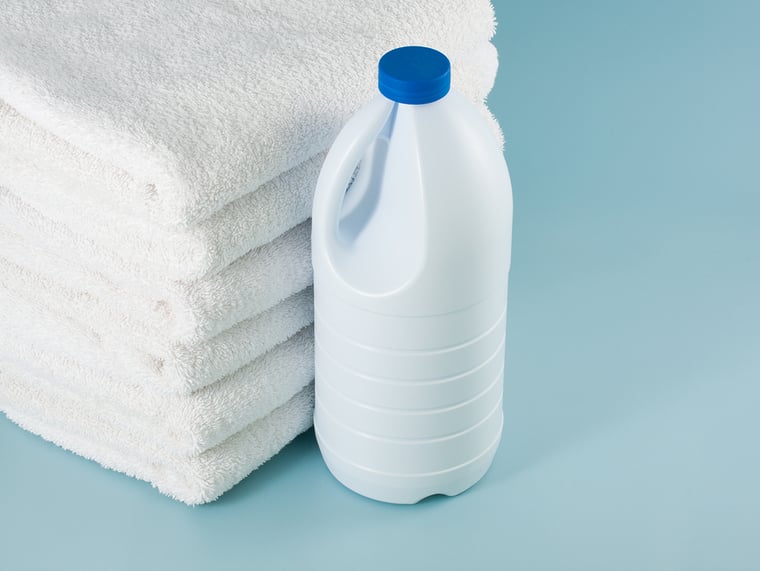
Loved for its powerful disinfectant properties, regular household bleach has more uses than you can imagine. Through testing and accidental discoveries, bleach has been proven to have a multitude of applications, some of them surprising. If you are only using this essential chemical to clean your home and laundry, then you are yet to untap its full potential. Here are some home cleaning tips for using bleach in and around the house:
Keeping Fresh Cut Flowers Alive
One of the best ways to add glamour to a room is by using fresh cut flowers. However, you have to change the vase water every day to keep the flowers alive longer. Although it’s easy to imagine that adding bleach to your vase will make the flowers droop and wither, it's far from the truth. Bleach helps your flowers to remain fresh longer. Just add a 1/4 teaspoon of bleach for each quart of water. It prevents the growth of bacteria, which affects your bouquet.
Cleaning Mold
Bleach is great for eliminating mold. Mold loves to grow in warm and damp places around your home. You can easily find it in your bathroom, basement, walls, tiles, and even the kitchen area. It discolors surfaces and has the potential to cause structural damage if left untreated.
Luckily, bleach has the power to kill any species of mold that grows inside and outside your home. To eliminate mold from a surface, use one cup of bleach per gallon of water. You can apply the solution to the surface using a spray bottle, a sponge, or cloth. Allow it to work the area for a few minutes, then scrub and rinse. After cleaning, you can respray that area to prevent the mold from growing back.
Killing Weeds
Weeds can thrive in cracks and crevices in your walls, sidewalk, stepping stones, and driveway. Instead of investing in expensive herbicides to eliminate the unwanted plants, use your laundry bleach; it kills a wide array of weeds and prevents new ones from sprouting. Whenever you locate unwanted plants, use a spray bottle to mist the weeds with undiluted bleach. Target the roots of the weeds and be careful not to spray neighboring plants. After 2 – 3 days, return to the site and pull out the dead weeds.
Eliminating Mosquitoes
Mosquitoes breed in standing water. Your birdbath, wading pool or any other stagnant water around your home can potentially be home to mosquitoes. Fortunately, you can use bleach to keep mosquitoes out of your home, as it kills their larvae. Bleaches that have at least 5.25 percent sodium hypochlorite as their active ingredients can effectively work as pesticides.
First, pour out the standing water, add fresh water, then add two tablespoons of household bleach to every 1.5 gallons of standing water. Repeat the procedure regularly since the solution won’t remain effective for long. Remember that you should never add bleach to a natural water source.
Refreshing Your Trash Can
A smelly outdoor garbage bin can make your home less inviting. Even if the job of these cans is to hold garbage, it doesn’t mean they have to be dirty and stinky. Bleach can be effectively used to tidy up the trash can. After the trash has been picked up, thoroughly clean the can with a detergent and rinse.
Take a bucket and mix a 3/4 cup of bleach with a single gallon of warm water. Pour it into the trash can and swish to make sure the solution gets to all corners of the container. Let it sit for ten minutes, then use a brush to scrub the can’s interior and rinse it out with a hose. Once it dries, spray its insides using bleach. Do this twice a year to make sure the smell doesn’t come back.
Deodorizing Litter Boxes
No one likes the smell of a dirty litter box, not even the cat. In fact, improper litter box maintenance is one of the reasons a cat will refuse to use it. Covering up the odor with litter box perfumes or additives will only create a strong smell that may irritate the cat and lead it to shun the box altogether.
Apart from removing the solids and liquid clumps every day, you also need to wash the litter box every week. One of the readily available products that can help you maintain an odorless litter box is bleach. Empty the box and use the bleach sparingly to avoid creating an overwhelming smell that may turn away the cat. Use 20 parts water to one part bleach, rinse thoroughly after cleaning, and add fresh litter.
Cleaning Your Flower Pots
Recycling old planters makes environmental and financial sense. However, you need to sanitize the flower pots before planting anything new in them. Cleaning the pots gets rid of pests and diseases that your old plants might have carried, it removes harmful mineral deposits that accumulate on the inside of planters, and it prevents the growth of mold.
To disinfect your flower pots, find a large container that can submerge all planters, add one half a cup of bleach to one gallon of water, and soak the pots for ten minutes. After removing them, rinse with clean water. Clay pots should be rinsed by soaking in clean water for up to two hours.
Cleaning Lawn Furniture
Lawn furniture can benefit from bleach, especially plastic items. Pour half a cup of regular bleach into a bucket filled with one gallon of water. Use a sponge to apply bleach to the surface. For heavily soiled areas, scrub with a brush. After five to ten minutes, rinse with clean water and then dry it. Bleach can also help to clean outdoor toys and eliminate mildew from a wooden fence.
Make Glassware Sparkle
If your drinking glasses are looking foggy, bleach can help eliminate any residue and stains in your glasses. Put one tablespoon of bleach into a gallon of warm water, soak your glasses for thirty minutes and then rinse with water.
Household bleach can be used to solve a myriad of issues around the house. It not only removes stains and disinfects surfaces, but it also has plenty of other surprising applications. To use this chemical safely, make sure you wear protective gloves and a mask whenever you are handling it. With these maintenance and home cleaning tips, you’ll have a sparkling and safer living space.

















